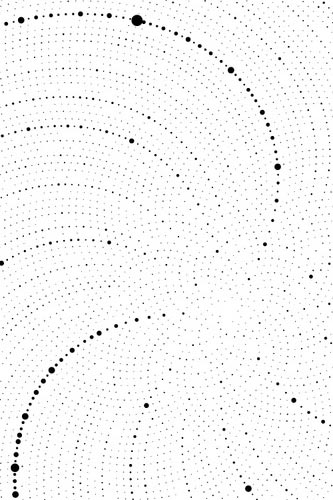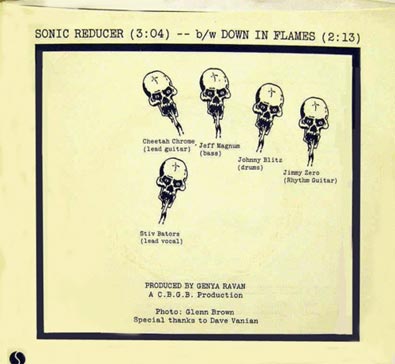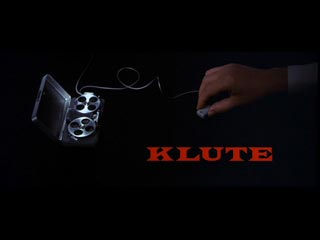flashback

At Çatalhöyük in Turkey, it appears that people did not live in families. Instead, the society seems to have been organised completely differently.
Discovered in 1958, Çatalhöyük’s many buildings are built so close together that people had to get in through the roof. Its inhabitants farmed crops and domesticated animals, and experimented with painting and sculpture.
They also buried their dead beneath the floors of the houses, suggesting that people were buried where they lived. So Marin Pilloud of the Central Identification Laboratory in Hickam, Hawaii, realised she could work out who lived together. (…)
We are used to the idea that living in close contact with our relatives helps to promote our own genetic inheritance and keep hold of our money and possessions over the generations. So why should Stone Age populations be different?
Pilloud thinks Çatalhöyük developed its odd social structure as the people began settling down and farming, rather than hunting and gathering. “It makes a lot of sense to shift to a community-centred society with the adoption of agriculture,” she says. People living in close quarters all year round and working together to produce food needed to create a strong community, rather than only cooperating with relatives.
{ NewScientist | Continue reading }
painting { Gustav Klimt, Beethoven Frieze, Hostile Force (detail), 1902 }
flashback, relationships, science | July 8th, 2011 9:14 am

On 7 July 1688 the Irish scientist and politician William Molyneux (1656–1698) sent a letter to John Locke in which he put forward a problem which was to awaken great interest among philosophers and other scientists throughout the Enlightenment and up until the present day. In brief, the question Molyneux asked was whether a man who has been born blind and who has learnt to distinguish and name a globe and a cube by touch, would be able to distinguish and name these objects simply by sight, once he had been enabled to see. (…)
For reasons unknown Locke never replied to the letter.
{ Stanford Encyclopedia of Philosophy | Continue reading }
artwork { Alan Bur Johnson }
flashback, ideas | July 5th, 2011 3:33 pm

On 26 September 1991, eight “bionauts,” as they called themselves, wearing identical red Star Trek–like jumpsuits (made for them by Marilyn Monroe’s former dressmaker) waved to the assembled crowd and climbed through an airlock door in the Arizona desert. They shut it behind them and opened another that led into a series of hermetically sealed greenhouses in which they would live for the next two years. The three-acre complex of interconnected glass Mesoamerican pyramids, geodesic domes, and vaulted structures contained a tropical rain forest, a grassland savannah, a mangrove wetland, a farm, and a salt-water ocean with a wave machine and gravelly beach. This was Biosphere 2—the first biosphere being Earth—a $150 million experiment designed to see if, in a climate of nuclear and ecological fear, the colonization of space might be possible.
{ Cabinet | Continue reading }
artwork { Jean-Léon Gérôme, The Duel after the Masquerade, 1857 }
flashback, science | July 1st, 2011 4:06 pm

Belief in a causal loop between the stomach and the mind never disappeared. (…) In the 1880s, Nietzsche diagnosed the whole Western philosophical tradition as a case of indigestion.
{ Review of A Modern History of the Stomach: Gastric Illness, Medicine and British Society, 1800-1950 by Ian Miller | London Review of Books | Continue reading }
flashback, health, ideas, science | June 24th, 2011 2:20 pm

UPS managed to save 3 million gallons of gas in 2006 by altering the routes of delivery trucks to avoid left turns. According to them, the company uses software called “package flow” to map out daily routes for drivers.
The problem the UPS driver faces, generally speaking, is that of the “traveling salesman,” in which our hero seeks the shortest possible round trip route given a list of required stops. Arising in road trip planning, school bus pickups, parking meter coin collection, power cable layout, and microchip design, it is not a new problem.
The famous 19th century Irish mathematician Sir William Rowan Hamilton, who at age 12 once defeated the notorious American “calculating boy” Zerah Colburn in an arithmetic-off, invented the “Icosian game,” in which players attempt to find round-trip routes through a twelve-sided figure such that each vertex is visited exactly once and no edge is visited twice.
Inspired by Hamilton’s early work and puzzle-making prowess, mathematicians in Vienna and Cambridge began studying the general form of the traveling salesman problem (TSP for short) in the 1930s.
In 1972, UC Berkeley Professor Richard Karp published perhaps the most famous paper written to date in computer science, called “Reducibility Among Combinatorial Problems.” The point, broadly speaking, is that most problems that appear difficult to solve exactly most likely are. Rather than proving that all kinds of problems have no easy solution, Karp gave a clever method for showing that many different sorts of problems are equivalent in a certain sense: if you provide a magic fast solver for hard problem A, Karp uses it to build a fast solver for hard problem B.
As a result, researchers are amassing an impressive set of hard problems, all reducible to each other, so that if anyone ever found a magic solver for just one of them, well, things would get pretty crazy. A variant of the TSP, that of undirected Hamiltonian Circuits (same Hamilton), was in Karp’s original list of 21 problems. (…)
Computer scientists spend much time devising heuristics — approximate methods for dealing with intractable situations. Here’s a simple heuristic for the traveling salesman: when trying to decide which stop to visit next on the tour, pick the closest remaining one. While in many cases, this rule yields a route much less efficient than the optimal one, it works reasonably well on average.
{ LiveScience, 2008 | Continue reading }
image { Peter Crnokrak }
flashback, science, transportation | June 20th, 2011 7:19 pm

It was 1985. I was 12 and standing next to my mother in a police station in Greenwich Village. She was a pretty red-haired gal in her late 30s, but the three police officers she was talking to weren’t looking at her. They were looking at the bag of crack vials she had in her hands, confused about what they were. I wasn’t confused. We had a lot of crack vials in our apartment at that point. Hundreds of them. My brothers and I played with them in Washington Square Park. We carried them around in our pockets the way other kids carried marbles.
I didn’t know then that this encounter would inspire a movement; that a group of local mothers would decide to do what the befuddled police would not: reclaim Washington Square Park from the drug dealers. (…)
My parents moved into our apartment at 32 Washington Square West in 1975. Over the next decade we watched as an army of dealers and their customers took over the heart of Greenwich Village. As a kid, I knew you didn’t ride your bicycle into the park, because a junkie would take it from you. The park’s arch, built as an imitation of the Arc de Triomphe, was covered in graffiti. When the city painted over it in 1981, Mayor Ed Koch applied the last stroke of white paint, then remarked, “That’ll last about an hour.”
{ John Carney/NY Times | Continue reading }
artwork { Kathe Kollwitz, Death and a Woman Struggling for a Child, 1911 }
drugs, flashback, new york | June 17th, 2011 2:12 pm

Not many authors can boast of having written a best-selling pornographic novel, much less one regarded as an erotica classic—but Pauline Réage could. Make that Dominique Aury. No: Anne Desclos.
All three were the same woman, but for years the real name behind the incendiary work was among the best-kept secrets in the literary world. Forty years after the publication of the French novel Histoire d’O, the full truth was finally made public. Even then, some still considered it the most shocking book ever written. When the book came out, its purported author was “Pauline Réage,” widely believed to be a pseudonym. Although shocking for its graphic depictions of sadomasochism, the novel was admired for its reticent, even austere literary style. It went on to achieve worldwide success, selling millions of copies, and has never been out of print. (…)
Desclos (or, rather, Aury, as she became known in her early thirties) was obsessed with her married lover, Jean Paulhan. She wrote the book to entice him, claim him, and keep him—and she wrote it exclusively for him. It was the ultimate love letter. (…)
Story of O, the title of the English edition, is an account of a French fashion photographer, known only as O, who descends into debasement, torment, humiliation, violence, and bondage, all in the name of devotion to her lover, René. Over the course of the novel she is blindfolded, chained, flogged, pierced, branded, and more.
{ Guernica | Continue reading }
photo { J. Kursel }
books, celebs, fetish, flashback, relationships | June 17th, 2011 2:11 pm

{ Vladimir Putin (at the time a KGB agent) undercover in Moscow as a tourist during a visit by then-president Ronald Reagan }

{ Teenage President Bill Clinton meeting John F. Kennedy }
more { Photographs which show historical figures in unexpected places or company | Quora }
celebs, flashback, photogs | June 14th, 2011 5:33 pm

Times change, and with them what, where, and how people eat. In fifteenth-century London a man could be hanged for eating meat on Friday. An ancient Roman was expected to wear a wreath to a banquet. The potato in sixteenth-century Europe was believed to cause leprosy and syphilis. As of two years ago, 19% of America’s meals were being eaten in cars.
{ Tom Dispatch | Continue reading }
photo { Holly Andres }
related { Biscuit Embossing }
U.S., flashback, food, drinks, restaurants, within the world | June 14th, 2011 11:03 am
flashback, photogs | June 14th, 2011 8:20 am

In 1846, an Irish immigrant named Alexander Turney Stewart opened a store in New York City unlike any that Americans had seen before. Located downtown, on the east side of Broadway, what became known as the Marble Dry Goods Palace was a huge emporium that offered luxury and everyday items alike. Stewart’s innovations as a retailer were numerous: He introduced what are believed to have been the first in-store fashion shows in America. He lavishly appointed his interiors, in striking contrast to the merely functional look of shops up to that point. And he was the first in the nation to use the street-level plate-glass windows as a display for merchandise.
Then there was A. T. Stewart’s most important innovation: His products came with price tags. At that time, in most stores, prices were set by haggling. The result was a frustrating dance between customer and salesperson, who parried back and forth until they managed to arrive at (in the words of one retail historian) “a price which neither party to the transaction considered robbery.” Stewart saw that this experience left buyers feeling taken advantage of, and it encouraged salespeople to squeeze the most from every transaction rather than build long-term relationships with customers. So he marked each product with a fixed price.
Customers embraced the new “no haggling” policy, and the Marble Palace became an enormous success. Sixteen years after the store’s debut, Stewart opened an even bigger one, the Cast Iron Palace at Broadway and 10th Street, which occupied a full city block and at the time was reputedly the largest retail establishment in the world. Stewart’s success—and his idea—did not go unnoticed by other merchants, and soon a plethora of other large stores, from Gimbels to Macy’s to Wanamaker’s in Philadelphia, abandoned haggling and adopted fixed prices. Within a generation, the price tag became ubiquitous; by the late 19th century, fixed prices seemed inseparable from the retail experience.
Almost a century and a half after Stewart’s innovation, a man named Pierre Omidyar opened another store unlike any that Americans had seen before: eBay.
{ Who Killed the Internet Auction? | Wired | Continue reading }
flashback, new york, technology | June 13th, 2011 8:05 pm

In the last decade, human vanity has taken a major hit. Traits once thought to be uniquely, even definingly human have turned up in the repertoire of animal behaviors: tool use, for example, is widespread among non-human primates, at least if a stick counts as a tool. We share moral qualities, such as a capacity for altruism with dolphins, elephants and others; our ability to undertake cooperative ventures, such as hunting, can also be found among lions, chimpanzees and sharks. Chimps are also capable of “culture,” in the sense of socially transmitted skills and behaviors peculiar to a particular group or band. Creatures as unrelated as sea gulls and bonobos indulge in homosexuality and other nonreproductive sexual activities. There are even animal artists: male bowerbirds, who construct complex, obsessively decorated structures to attract females; dolphins who draw dolphin audiences to their elaborately blown sequences of bubbles. Whales have been known to enact what look, to human divers, very much like rituals of gratitude. (…)
Bit by bit, we humans have had to cede our time-honored position at the summit of the “great chain of being” and acknowledge that we share the planet — not very equitably or graciously of course — with intelligent, estimable creatures worthy of moral consideration. (…)
As Paul Trout makes clear in his fascinating Deadly Powers: Animal Predators and the Mythic Imagination, the important distinction, from a human point of view, is not between animals and humans, but between animals that we eat and animals that eat us.
Trout’s book is the most ambitious survey to date of the relationship between humans and the wild carnivores that have preyed on them as long as Homo sapiens, or our hominid ancestors, have existed. (…)
It is the “other animals” who of course have paid the highest price for the human ascent to the top of the food chain. In no small part because of our own terrifying prehistory as prey, humans could not seem to stop killing, as if we had to keep reassuring ourselves, over and over, that we had indeed evolved from prey to predator. Many explanations have been offered for the massive extinctions of large animals (megafauna) that began about 12,000 years ago — viruses, meteor hits, climate changes — but the soundest hypothesis is summarized by the word “overkill.” Humans killed what they needed to eat and then killed much more, eliminating animal populations as they spread out over the globe on foot or by sea. In the Americas, the Pacific Islands, and Australia, megafaunal extinctions follow closely upon the arrival of humans.
{ LA Review of Books | Continue reading }
related { I discovered my incredible strength at the age of 13, and, almost immediately afterwards, promised myself that, one of these days, I would fight a lion. If he chooses to withdraw, or surrender, and lets me tie him up, then I will not kill him and the fight will end. But if it comes down to either me or him, I will have to kill him. If this battle does not get the positive reaction I’m expecting, then I will be forced to leave the country and go somewhere where they can appreciate a man like me: the strongest man in the world. | Foreign Policy | Continue reading }
related { Top 10 Heroic Animals }
animals, flashback, ideas | June 9th, 2011 11:05 pm

I found myself staring at a publication titled Horseshit. The cover featured a crisp illustration of a man with a face wrapped in barbed wire. It recalled Winston Smith’s cover of the Dead Kennedys’ Give Me Convenience or Give Me Death. Clearly, I thought, this was a punk zine I’d never heard of. What was it doing here? I opened it and immediately discerned three things:
1) The magazine predated punk by at least ten years.
2) It was full of extremely arousing drawings of nude women.
3) It was also full of disturbing antimilitary propaganda.
(…)
“Excuse me,” I said as I lifted the magazine. “How much for this?”
“That’s NOT for sale.”
(…)
Later I scouted for clues about Horseshit online, but there weren’t many. I learned from one website that the magazine was published by two brothers, Thomas and Robert Dunker (Thomas, a paraplegic, died in 2003). In 1968, Horseshit was responsible (along with Zap, Snatch, and the SCUM Manifesto) for the arrest of Berkeley bookseller Moe Moskowitz on charges of selling pornography. A year later, Frank Zappa referenced the magazine in his track “German Lunch.” Beyond those two intriguing historical morsels, Horseshit occupies a void. A few online booksellers offered complete sets of the magazine—all four issues for $150.
{ Vice | Continue reading }
flashback, press | June 6th, 2011 5:56 pm

In Excavating Kafka, James Hawes tackles some of the myths that have built up around the writer. He suggests that Kafka is generally touted - both in ‘popular culture’ and in the worthy avenues of academe - as a gaunt, melancholy, saint-like type, staring out of blurred black-and-white photographs with anguished eyes. He was a man who ordered in his will that his works should be destroyed, who languished in obscurity throughout his lifetime, who was ‘crushed by a dead-end bureaucratic job’ and, equally, by a tyrannical father. This Kafka was an all-round seer who had no interest in the reception of his work, so preoccupied was he by his ‘Kafkaesque’ imagination. ‘These are the building blocks of the K-myth,’ writes Hawes in his introduction. ‘Unfortunately, they are all rubbish.’
Hawes, a former academic who spent 10 years studying and teaching Kafka, insists that he was not a ‘lonely Middle European Nostradamus’. Rather, he lived with his parents and was set up with a relatively cushy job (six hours a day for the equivalent of £58,000 today), leaving him plenty of time to write. Thanks to his literary connections, he won a major literary prize in his early thirties before even publishing a book. He was not tragically unrequited in his love affairs; nor was he virtually unknown in his lifetime (’we see him named three times in two entirely different articles in a single edition of the Prague Daily News in 1918′). Hawes even proposes that Kafka didn’t really want his work to be burned after his death and knew full well that the loyal Max Brod would never do it.
{ Guardian | Continue reading }
experience, flashback, ideas | May 25th, 2011 5:36 pm

Charles Darwin suffered from a persistent, debilitating illness for most of his adult life with a wide range of bizarre symptoms. Attacks of nausea and vomiting were his most distressing complaint but he also experienced headaches, abdominal pains, ‘lumbago’, palpitations and chest pain, numbness and tingling in the fingers, sweating, heat and cold sensitivity, flushing and swelling of his face and extremities, eczema, recurrent boils, attacks of acute anxiety, a sensation of dying and hysterical crying.
Apart from these major symptoms Darwin also occasionally vomited blood, he developed dental decay and skin pigmentation. (…) Darwin also had mild dyslexia. (…) With the dyslexia there is a frequent association of amusica – tone deafness, and Darwin was tone deaf.
{ Butterflies and wheels | Continue reading }
photo { Sanna Kannisto }
celebs, flashback, health | May 20th, 2011 9:52 am

Whether in Greek theaters or Roman courts, buying people to clap for you was once common practice. In fourth century BC Athens, for example, comic playwright Philemon defeated his contemporary Menander in theatrical competitions, not because he was better (he wasn’t) but because of hired hands that swayed the judges. The Roman emperor Nero went further, establishing an entire school of applause and keeping in his train a claque of five thousand; all soldiers, they would sing Nero’s praises before subjecting the citizenry to His Majesty’s stagecraft.
The claque was revived in sixteenth-century France, when poet Jean Daurat bought tickets to his own plays and gave them to people on the condition that they like it loudly. By the early 1800s, the claque racket in Paris had reached boutique proportions: one could shop for rieurs (to laugh), pleureurs (to cry), or commissaires (to nudge neighboring audience members about upcoming good scenes).
{ Laphams Quarterly | Continue reading }
flashback, leisure | May 18th, 2011 12:13 pm

{ Hulton/Deutsch Collection/Corbis }
flashback, giraffe, photogs, taxidermy | May 16th, 2011 5:25 pm

Barbers in the modern period are known to do mainly one thing: cut hair. For much of the last hundred and fifty years, their red and white striped barber poles signified their ability to produce a good clean shave and a quick trim. This was not always the case, however.
Up until the 19th century barbers were generally referred to as barber-surgeons, and they were called upon to perform a wide variety of tasks. They treated and extracted teeth, branded slaves, created ritual tattoos or scars, cut out gallstones and hangnails, set fractures, gave enemas, and lanced abscesses. (…)
During the 12th and 13th centuries, secular universities began to develop throughout Europe, and along with an increased study of medicine and anatomy came an increased study in surgery. This led to a split between academically trained surgeons and barber-surgeons, which was formalized in the 13th century. After this, academic surgeons signified their status by wearing long robes, and barber-surgeons by wearing short robes. Barber-surgeons were thus largely referred to as “surgeons of the short robe.”
{ Brain Blogger | Continue reading }
flashback, health, science | May 10th, 2011 7:05 pm























